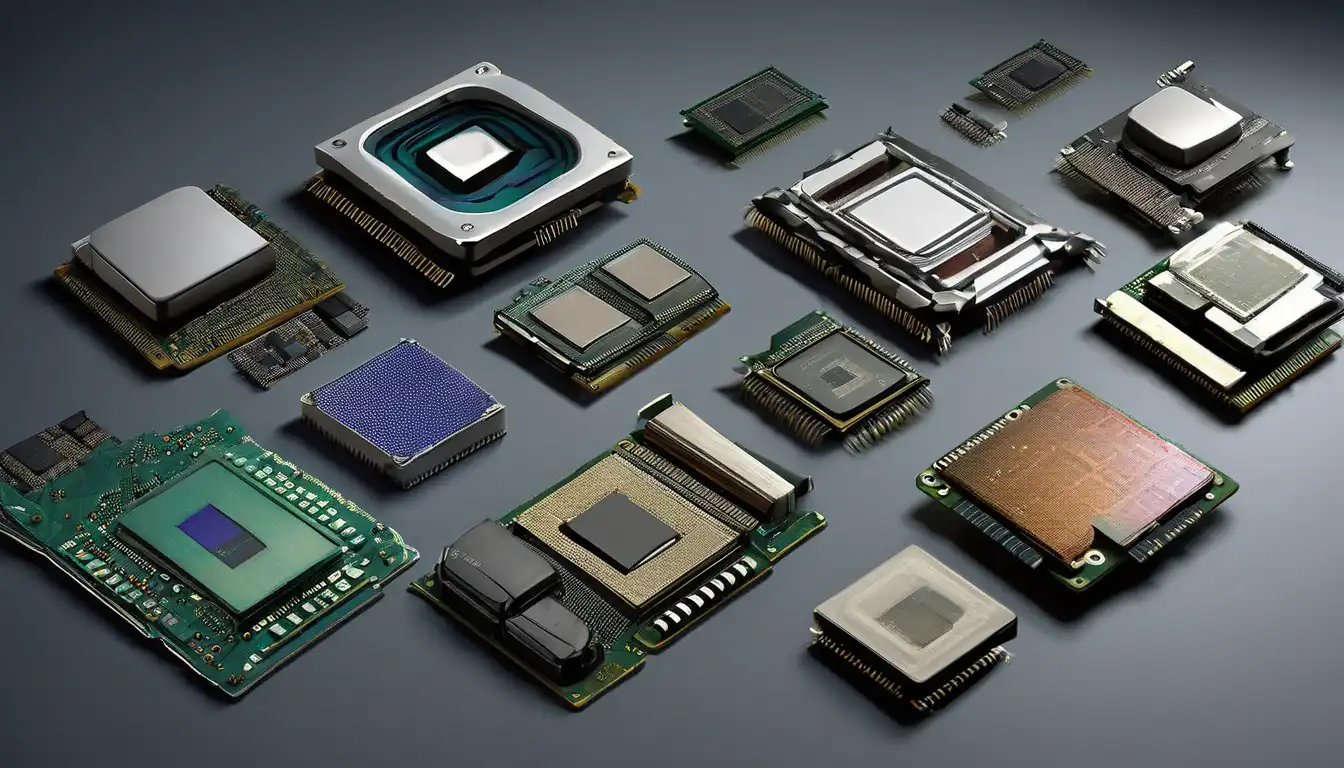The Dawn of Computing: Early Processor Technologies
The evolution of computer processors represents one of the most remarkable technological journeys in human history. Beginning with primitive vacuum tube systems in the 1940s, processors have undergone revolutionary transformations that have fundamentally changed how we live, work, and communicate. The first electronic computers, such as ENIAC, utilized thousands of vacuum tubes that consumed enormous amounts of power and required constant maintenance. These early processors operated at speeds measured in kilohertz, yet they laid the foundation for the digital revolution that would follow.
The Transistor Revolution: 1950s-1960s
The invention of the transistor in 1947 marked a pivotal moment in processor evolution. By the 1950s, transistors began replacing vacuum tubes, offering significant advantages in size, reliability, and power consumption. This transition enabled the development of smaller, more efficient computers that could be used in business and scientific applications. The IBM 700 series and other mainframe computers of this era demonstrated the growing capabilities of transistor-based processors, though they remained expensive and accessible only to large organizations.
Integrated Circuits: The Next Leap Forward
The development of integrated circuits in the late 1950s and early 1960s represented another quantum leap in processor technology. Jack Kilby and Robert Noyce independently developed methods for integrating multiple transistors onto a single semiconductor chip, paving the way for mass production of complex electronic circuits. This innovation dramatically reduced the size and cost of processors while increasing their reliability and performance. The introduction of the first commercially available microprocessor, the Intel 4004 in 1971, marked the beginning of the modern processor era.
The Microprocessor Revolution: 1970s-1980s
The 1970s witnessed the birth of the personal computer revolution, driven by increasingly powerful and affordable microprocessors. Intel's 8008 and 8080 processors, along with competitors like Motorola's 6800, enabled the development of early personal computers such as the Altair 8800. The introduction of the IBM PC in 1981, powered by Intel's 8088 processor, established the x86 architecture that would dominate personal computing for decades to come.
Key Developments in Microprocessor Design
- RISC Architecture: Reduced Instruction Set Computing emerged as an alternative to complex instruction set computing, offering improved performance through simplified instruction sets
- Clock Speed Increases: Processors evolved from operating at a few megahertz to hundreds of megahertz during this period
- Cache Memory: The introduction of on-chip cache memory significantly improved processor performance by reducing memory access times
- Floating-Point Units: Integrated math coprocessors enhanced scientific and engineering applications
The Performance Race: 1990s-2000s
The 1990s marked an era of intense competition and rapid innovation in processor design. Intel's Pentium processors and AMD's competing offerings drove performance to unprecedented levels while becoming increasingly affordable for consumers. This period saw the introduction of superscalar architecture, which allowed processors to execute multiple instructions per clock cycle. The transition to 32-bit computing and later to 64-bit architecture expanded memory addressing capabilities and enabled more complex applications.
Multicore Processors and Parallel Computing
By the mid-2000s, physical limitations in processor manufacturing led to a fundamental shift in design philosophy. Instead of focusing solely on increasing clock speeds, manufacturers began integrating multiple processor cores on a single chip. This multicore approach allowed for improved performance through parallel processing while managing power consumption and heat generation. The evolution from dual-core to quad-core and eventually to processors with dozens of cores transformed how software was developed and optimized.
Modern Processor Technologies: 2010s-Present
Contemporary processor design incorporates sophisticated technologies that optimize performance, power efficiency, and specialized computing capabilities. Modern processors feature advanced manufacturing processes measured in nanometers, with current state-of-the-art processors built using 3nm and 5nm technology nodes. These manufacturing advances have enabled the integration of billions of transistors on a single chip.
Key Modern Processor Features
- Heterogeneous Computing: Combining different types of cores (performance and efficiency cores) on the same chip
- AI Acceleration: Specialized hardware for machine learning and artificial intelligence workloads
- Advanced Security Features: Hardware-level security enhancements to protect against emerging threats
- Energy Efficiency: Sophisticated power management for mobile and battery-powered devices
The Future of Processor Evolution
Looking ahead, processor evolution continues to accelerate with several emerging technologies poised to shape the next generation of computing. Quantum computing represents a fundamental shift in processing paradigm, potentially solving problems that are intractable for classical computers. Neuromorphic computing, inspired by the human brain, offers new approaches to artificial intelligence and pattern recognition. Photonic computing, which uses light instead of electricity, promises dramatically faster processing speeds with lower power consumption.
Challenges and Opportunities
As processor technology advances, several challenges must be addressed. Physical limitations of semiconductor manufacturing, often referred to as the end of Moore's Law, require innovative approaches to continue performance scaling. Thermal management remains critical as processor densities increase. Security concerns grow more complex with each new generation of processors. However, these challenges also present opportunities for breakthrough innovations that could redefine computing in the coming decades.
The evolution of computer processors has been characterized by exponential growth in performance and capability, driving innovation across virtually every sector of society. From enabling space exploration to powering the digital economy, processors have become the fundamental building blocks of modern technology. As we look to the future, the continued evolution of processor technology promises to unlock new possibilities in artificial intelligence, scientific discovery, and human-computer interaction that we can only begin to imagine.
